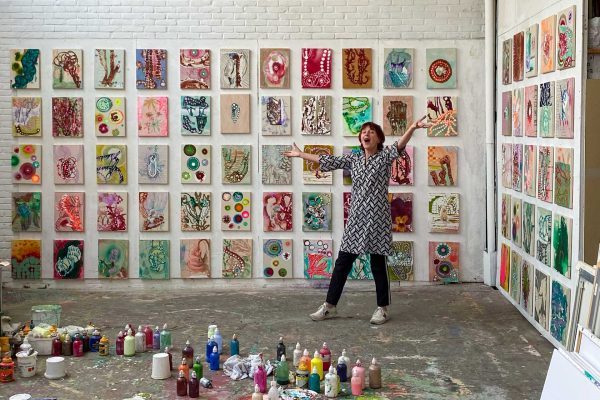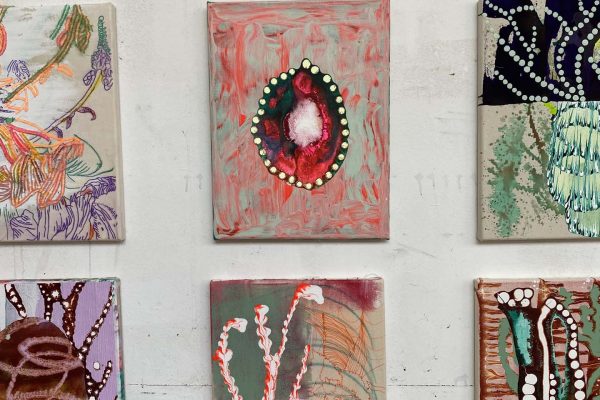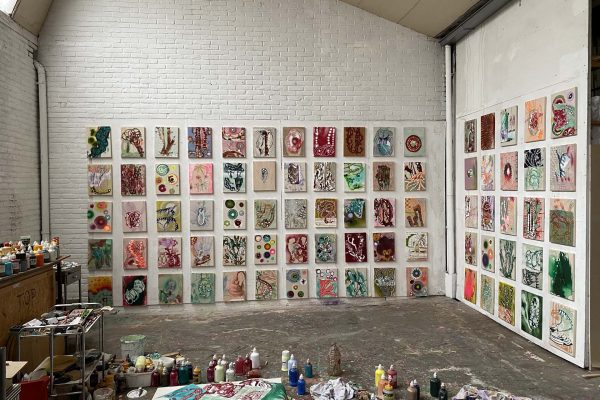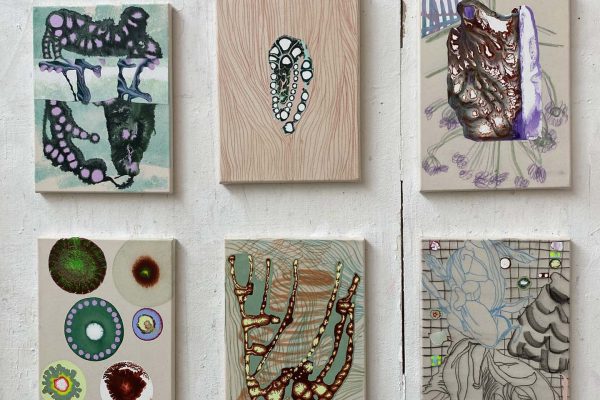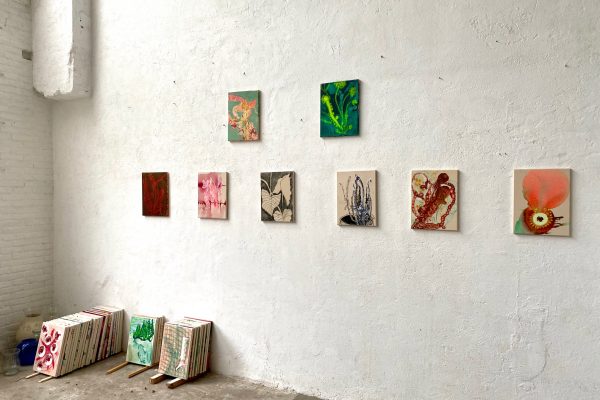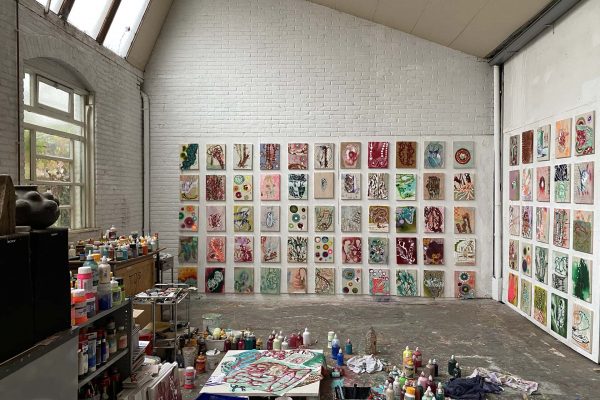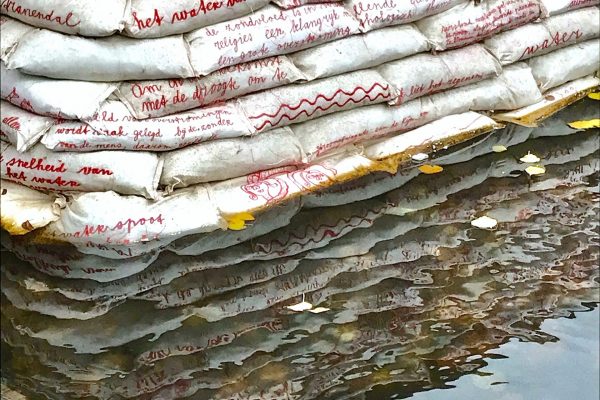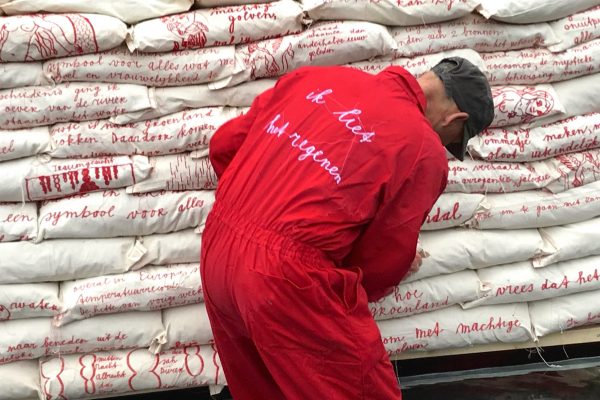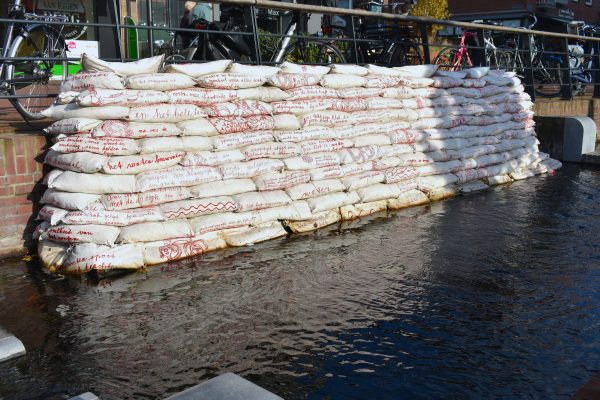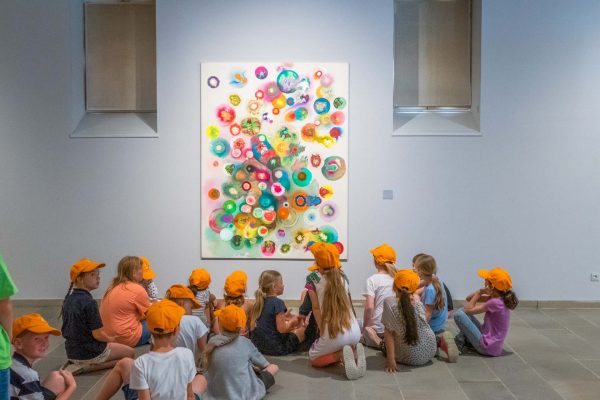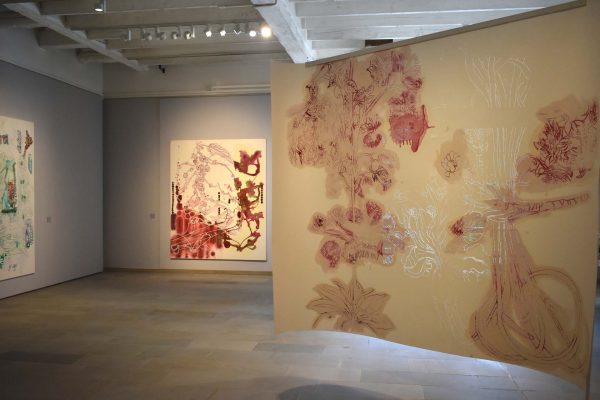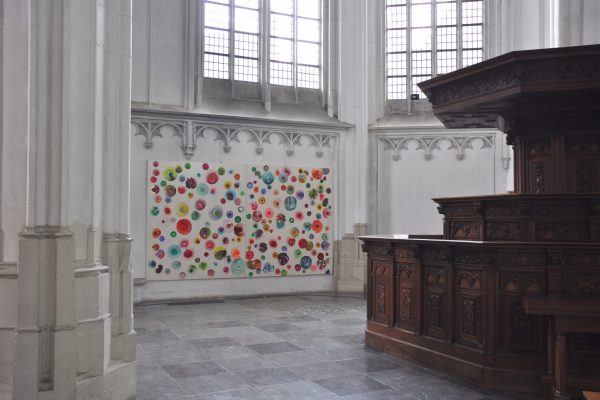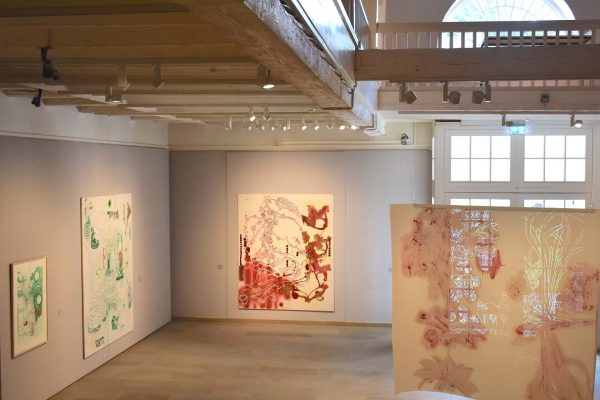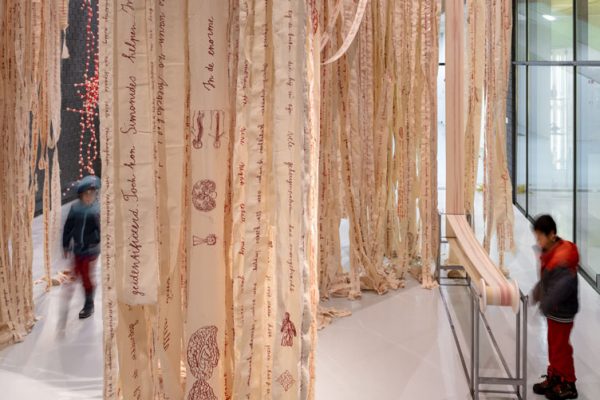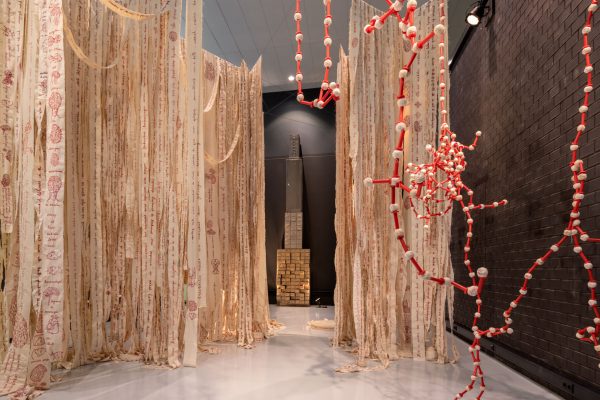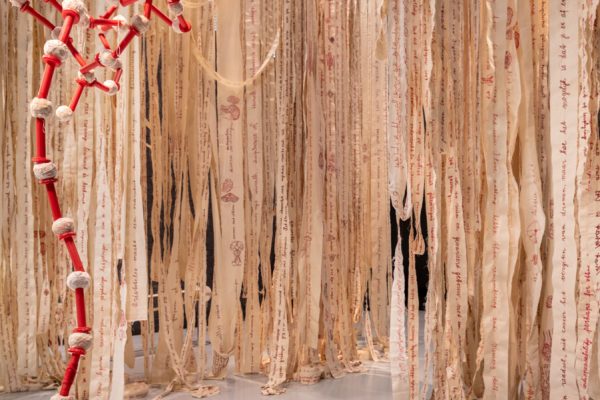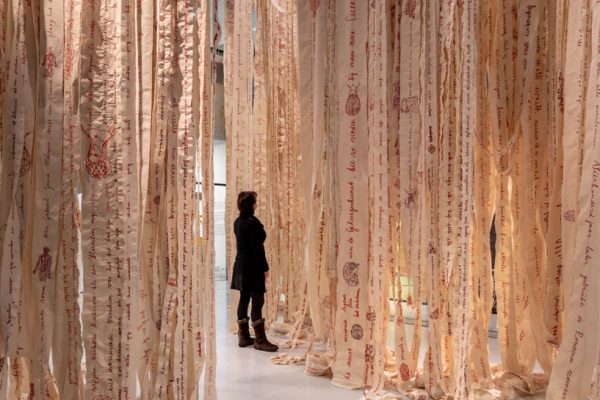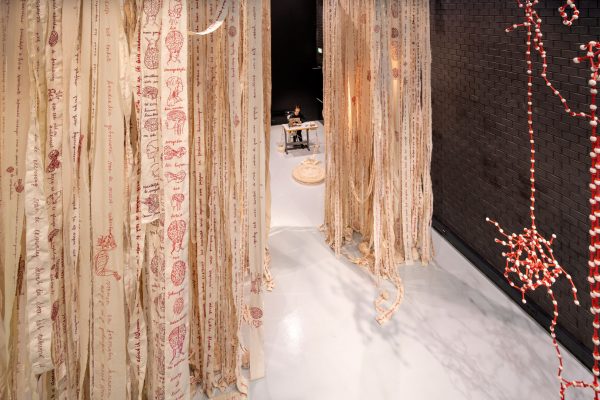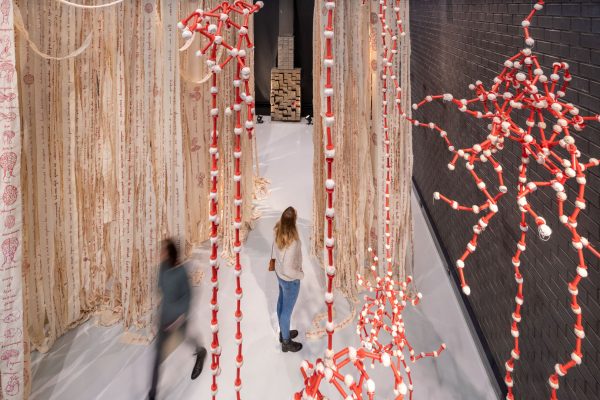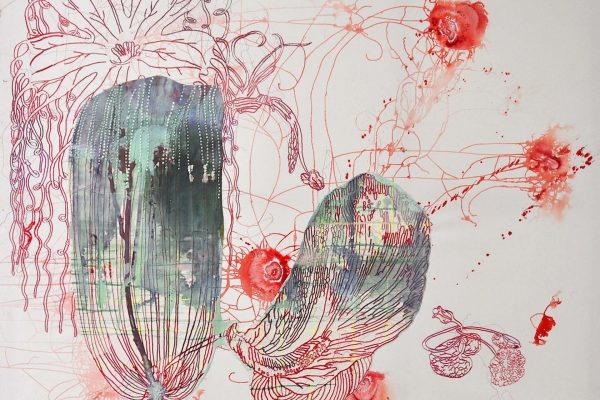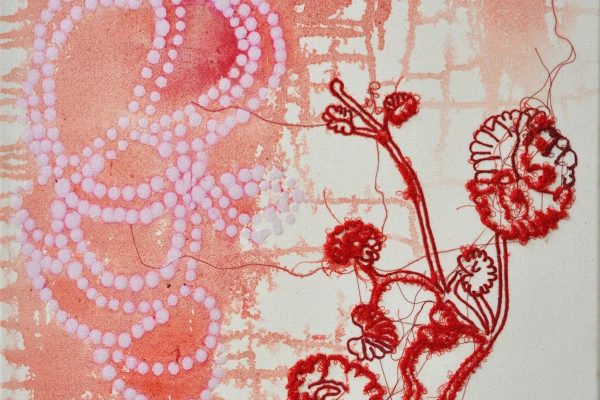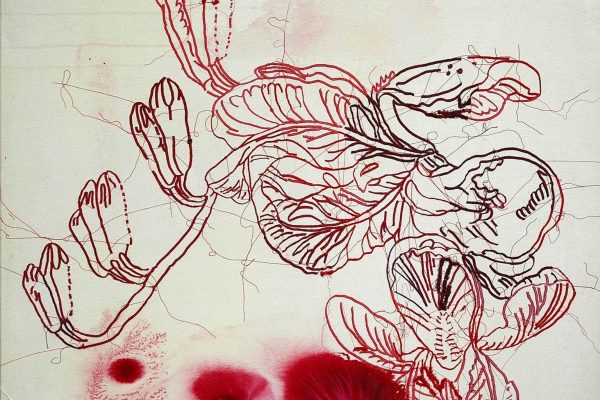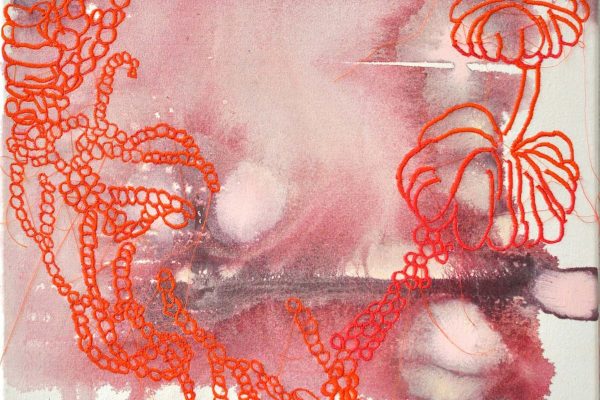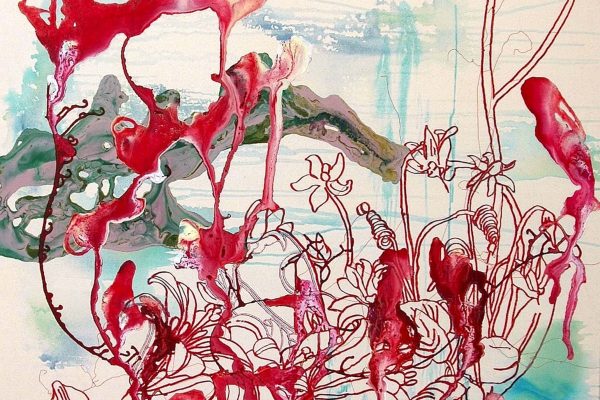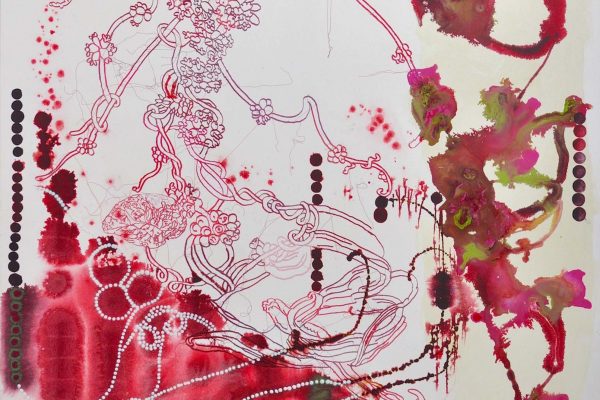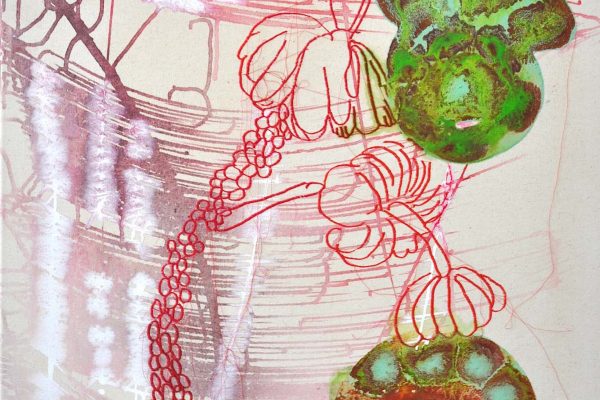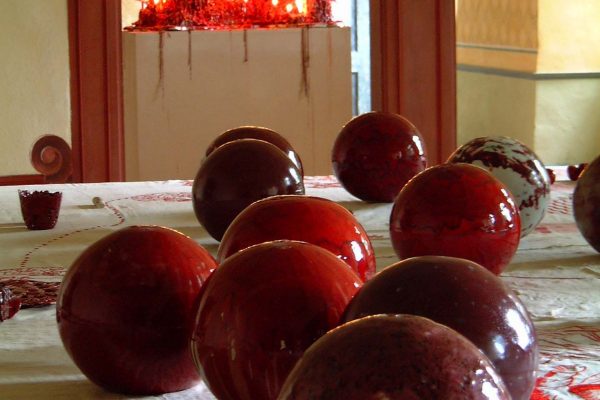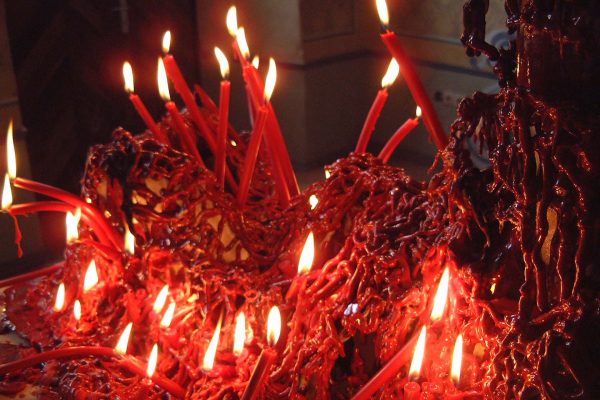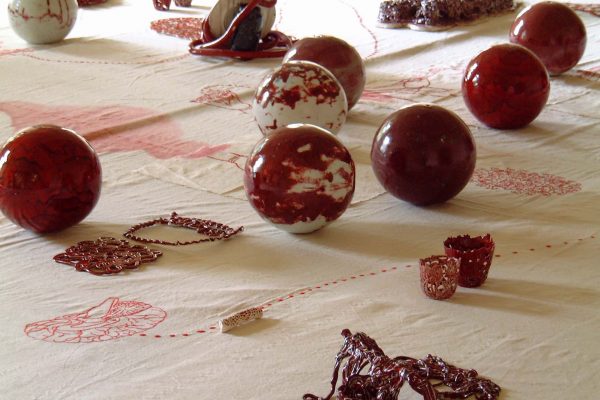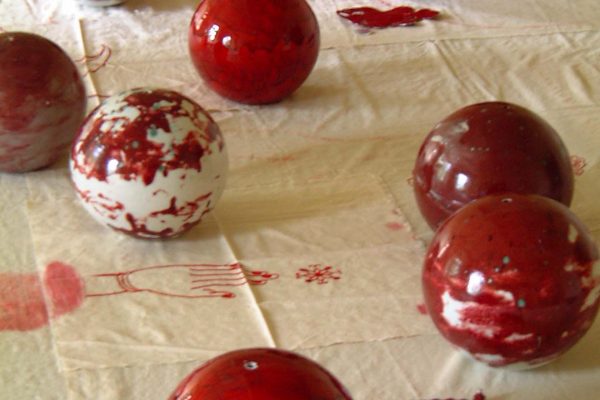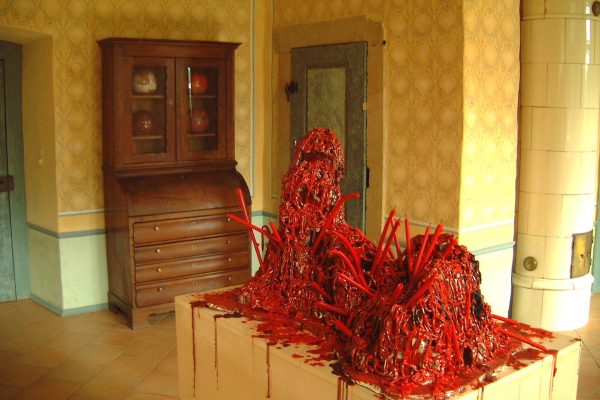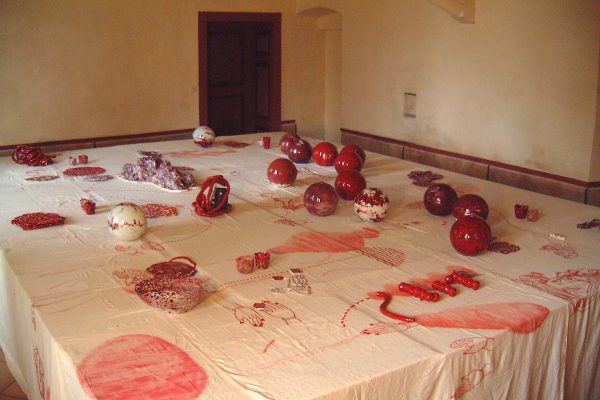Timeline
At the beginning of the Dutch intelligent lockdown, Seet was wondering the same as everyone else: “What now?” She gave herself a single guideline: Every day I will create a work on a set format.
40 days Seet gave herself, because that’s how long a quarantine lasts, right? When the 40 days were over, she did not experience completion: the world had not returned to normal. The daily paintings kept her going during this abnormal period. It helped her find and rediscover joys, which made her decide to continue.
Every day a new surprise appears on her canvas: new worlds unfold themselves, causing strange and exciting sensations. Her fascination for the natural processes that appear on the canvas helps Seet create a contradicting natural beauty in her collages. Apart from her daily, small paintings, Seet revisits her earlier works from the ‘90’s during this period. She uses these works as a base for new, larger works. She returns to her core: back to her older works and the beauty of nature.
FIRST PUBLIC SCULPTURE
Embroidered sand bags with drawings and texts that decay naturally in six weeks.
For the theme of Climate Change, Seet created a sculpture for the Gelderse Biennale. An absurdist visual; heavily embroidered sand bags that hang from the sides of a stream that will never flood, which runs through the city. The texts and drawings elicit thoughts regarding the theme that has been on the minds of many cultures: How do we manage water? Through decay and nature’s involvement, the sight of the sculpture has continuously changed.
VAL, JIJ WATER Gelderland Biënnale City Centre Arnhem & Valkhof Museum, Nijmegen /NL
FLOWER TIMELINE
Exhibition in Paderborn, which showed a sample of works that represented all of Seet’s flower collections.
In earlier abstract works by Seet, flowers suddenly began appearing. She chose to develop her understanding, which led her from drawings and etchings from the seventeenth century, right to her own garden. While the flowers used to be accompanied by other themes in earlier exhibitions, the Paderborn exhibition exclusively included flowers from different times over a twelve-year period.
BUILDING THE GARDEN Städtische Galerie in der Reithalle, Paderborn-Schloss Neuhaus /DE
STRANDS OF MEMORY
Embroidered textile strands hung from a height of six meters on the patio of the Valkhof Museum.
Seet worked for months on this installation, with the assistance of a number of embroidery assistants. The work is made of long strands of cotton, embroidered with lines from literary works, poems, news items and diary entries. The work displays the complexities of memory: the chaos, the structure, remembering, and forgetting. Visitors were invited to walk through the artwork and watch Seet while she was working: she was on the patio every Wednesday so people could follow the process of her creation.
BACKUP Museum het Valkhof, Nijmegen /NL
CONTROLE VS. CHAOS
Labor-intensive and precise embroidery vs. flowers grown from coincidence and memory
The embroidery is labor-intensive, with many small components that together form a controlled whole. Seet’s painting style is then wildly different: the flowers are formed by pouring and dripping paint. She creates with controlled coincidence, without retouching or polishing. It remains as it turned out to be.
The flowers that were formed inspired Seet to further her understanding of flower drawings, -etches and woodcuts of explorers from the seventeenth century. Their lines, drawn 500 years ago, reappear in her work. This goes to show the fascination for the old that flows into the new.
Red Greenhouse, WHITECONCEPTS, Berlin/DE
Red Greenhouse, Stadtmuseum Siegburg/DE
Red Greenhouse, AKKUH, Hengelo/NL
Red Greenhouse, Gallery Arteversum, Dusseldorf/DE (with uwe Poth)
RED GREENHOUSE Gallery Gist, Amsterdam/NL
BLOODRED
Group exhibition in a deserted monastery. Previously home to nuns, but now inhabited by bloodred art.
In the breakfast hall of the monastery, Seet grouped all of the tables together to set one giant table with woven and embroidered cloths and ceramics. The room’s fresco of the figure of Christ served as an inspiration: portrayed with the Holy Grail collecting drops of blood. Seet’s work is an ode to the nuns, who had to leave the monastery behind.
Blutrot, Kloster-Kunst-Landschaft, Malgarten/DE
NEW MEMORIES
In India, Seet found color, freedom, new collaborations and a reignited love: textile.
The artist centre of Trivandrum presented Seet an opportunity to paint in India. While Seet previously worked solely with earth tones, she abandoned her rules and embraced the bright colors of India. She has not let go since.
Seet’s works were exhibited in the guard house, and on large billboards at the side of the road. The real turn over happened when she crossed paths with the weaving factory in Cochin. The factory and the collaboration with the local women reignited her love for fabrics.

